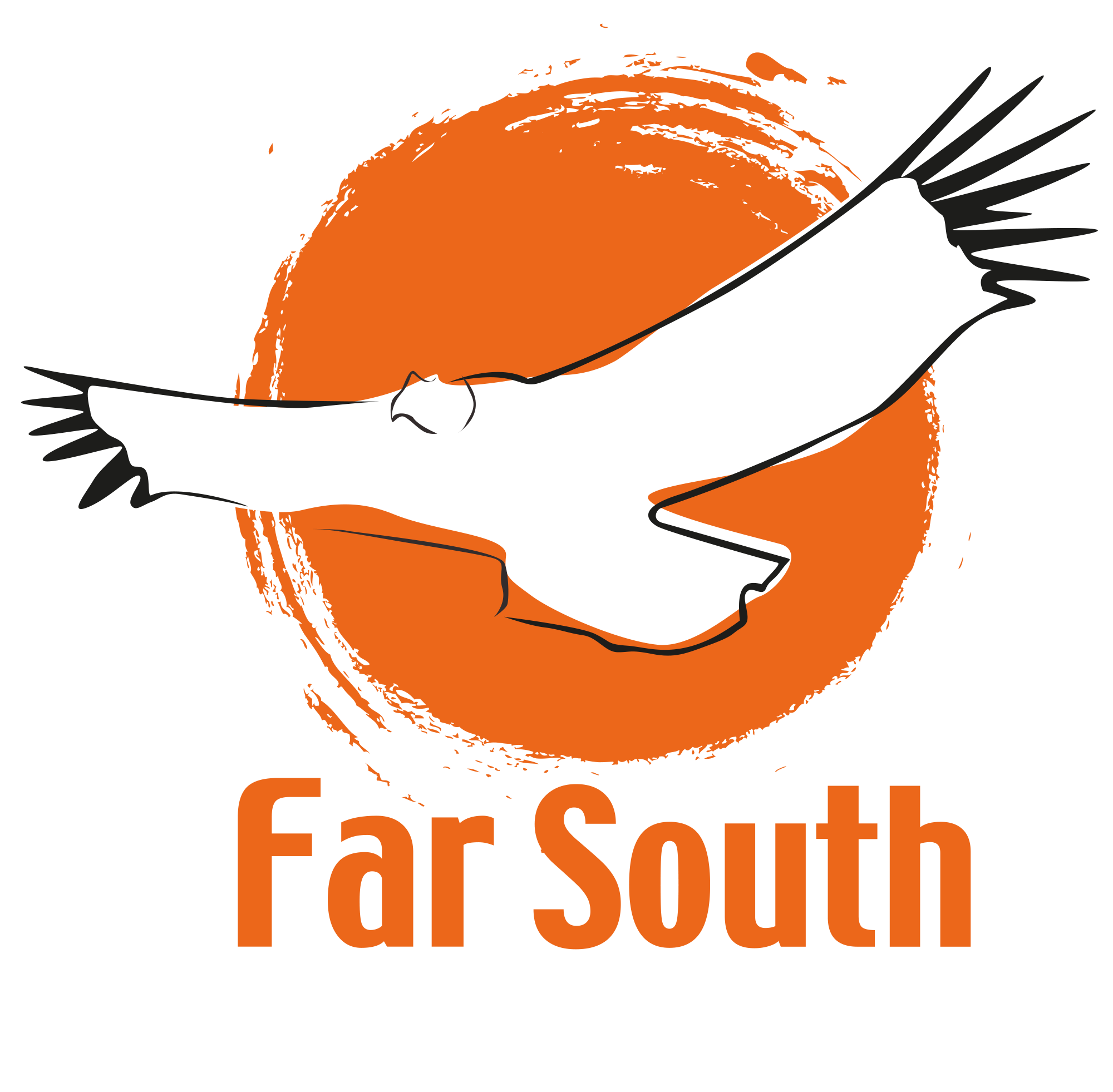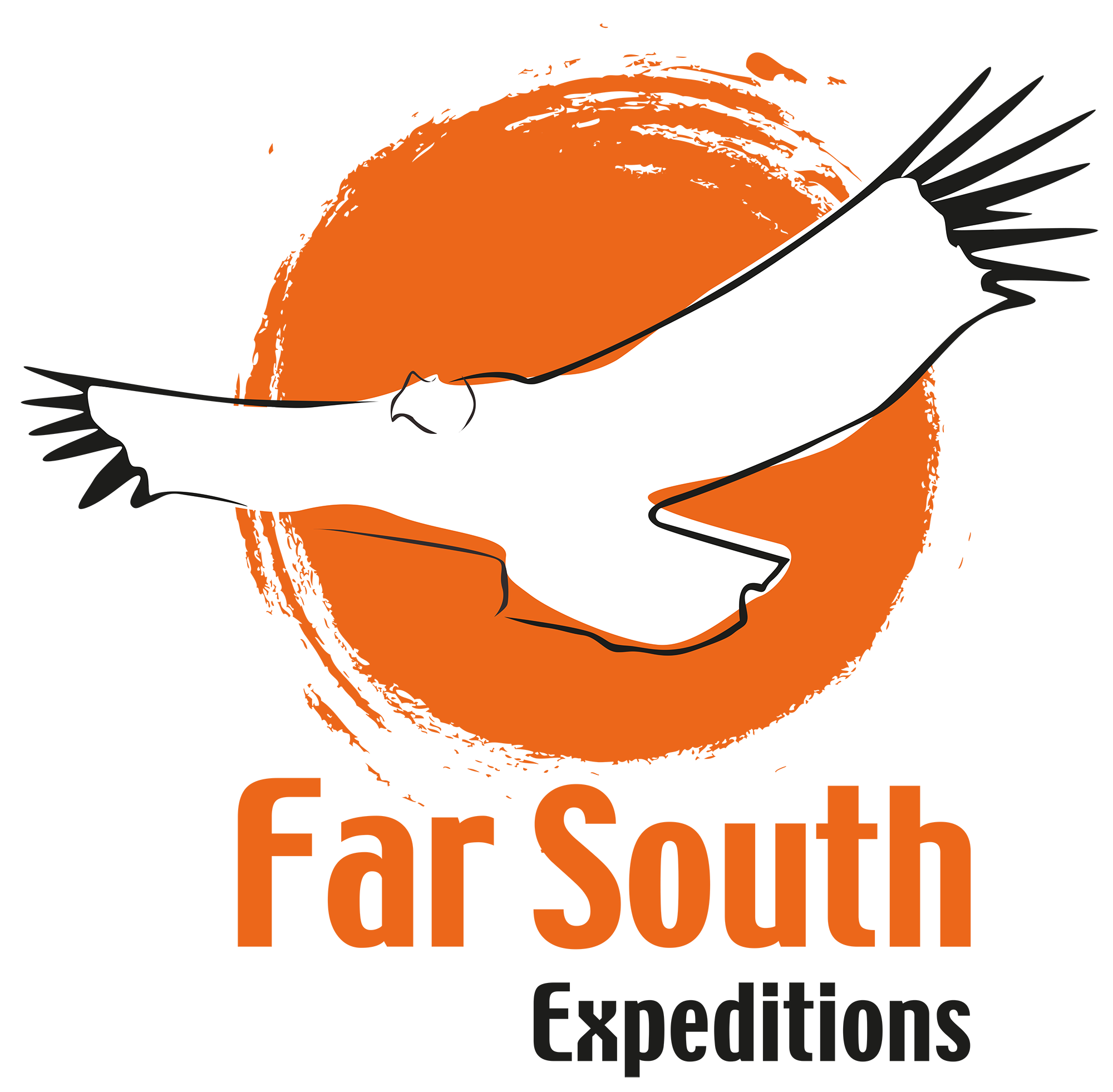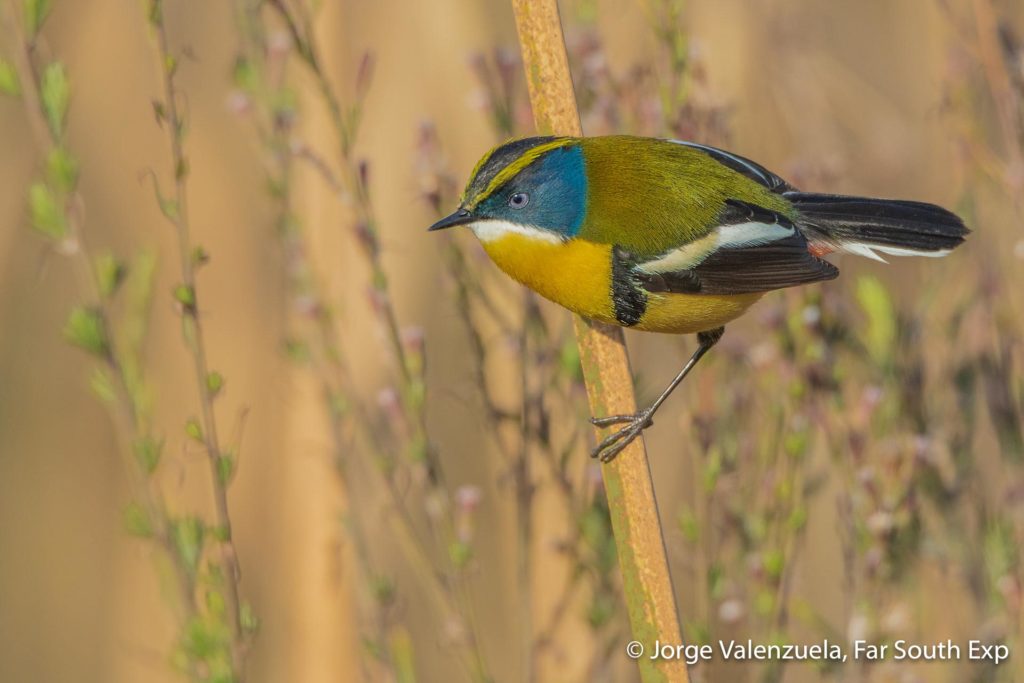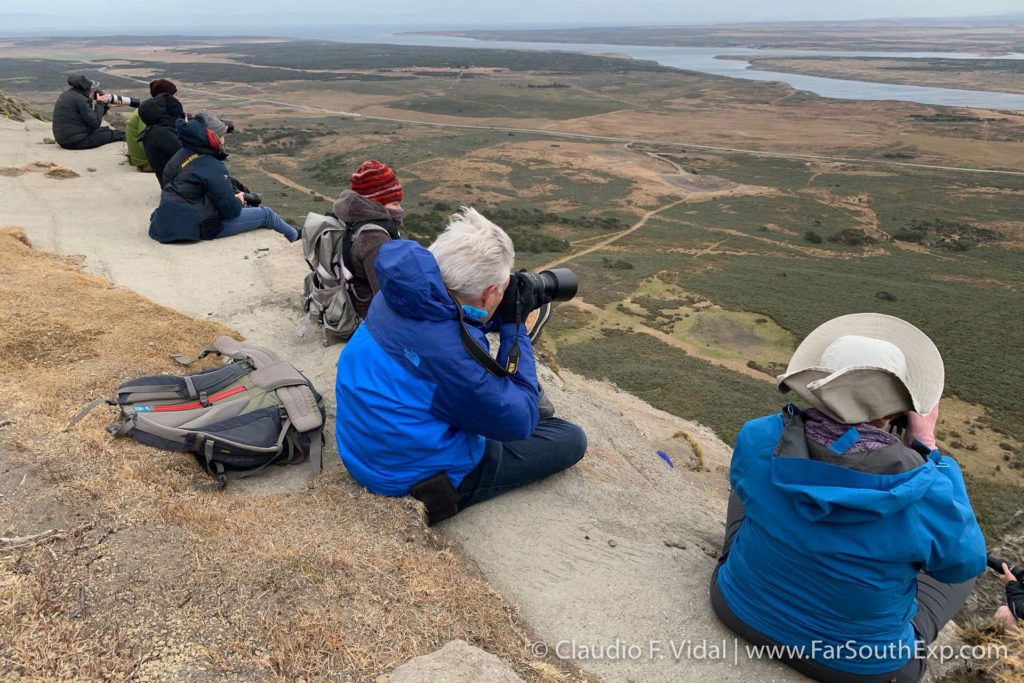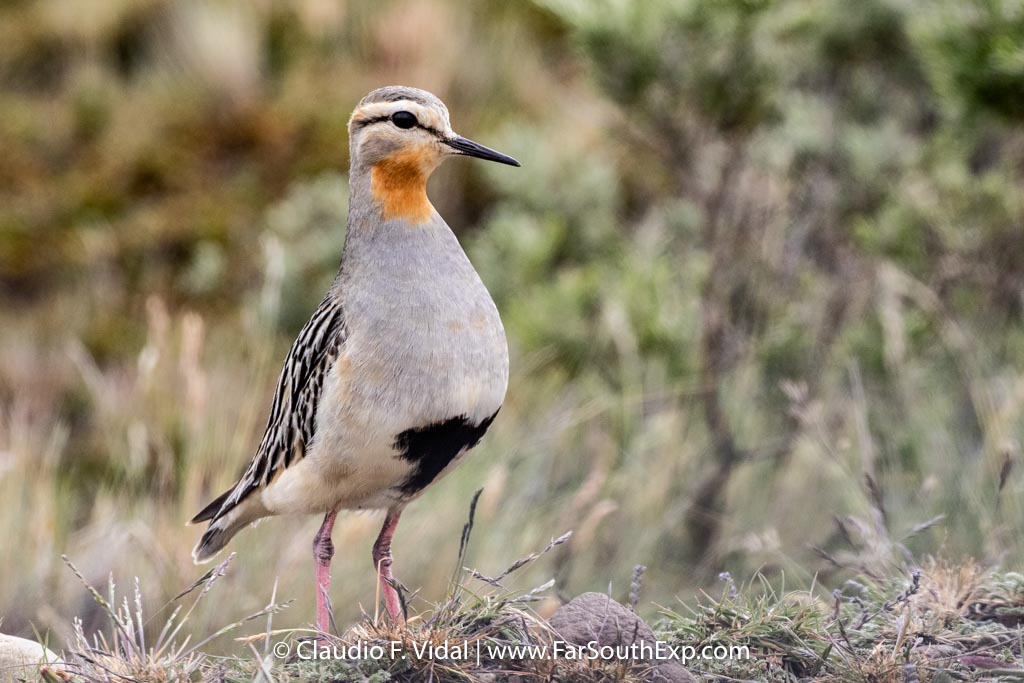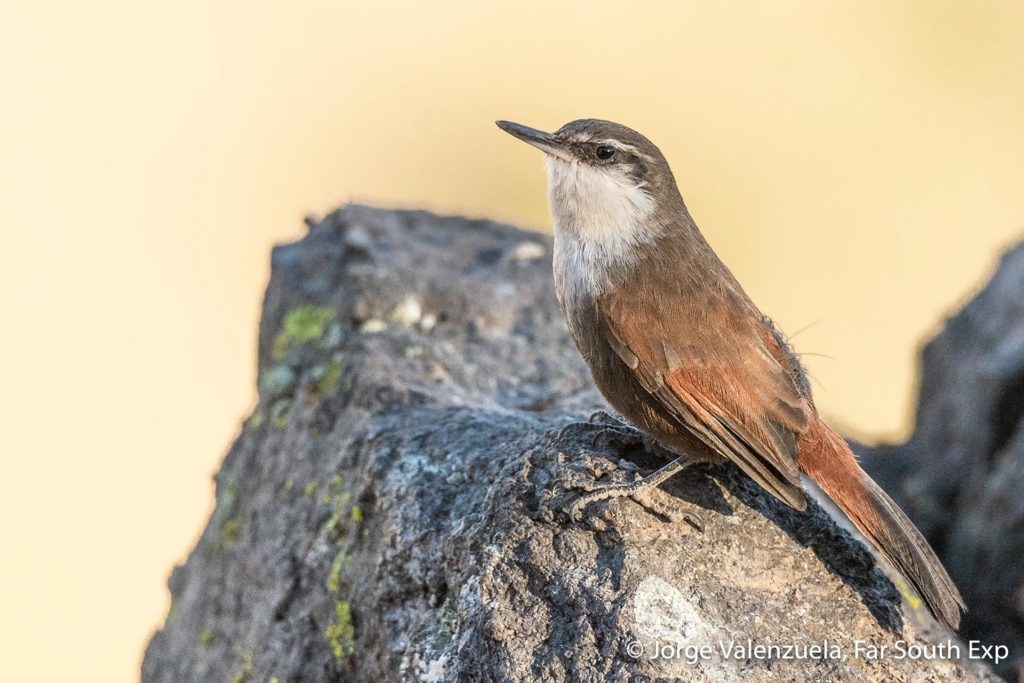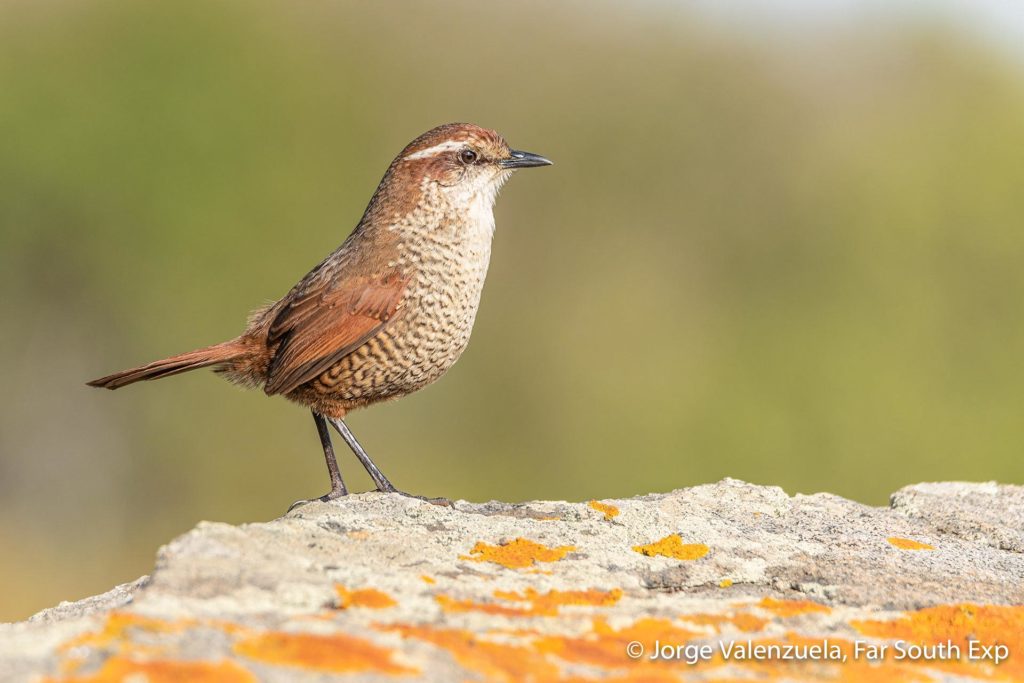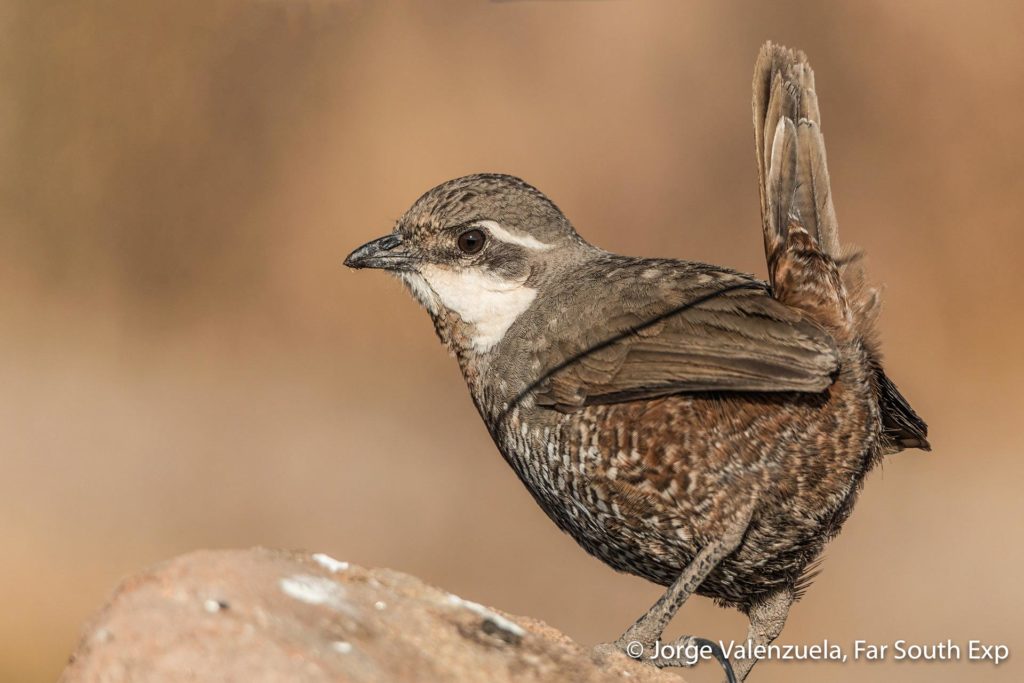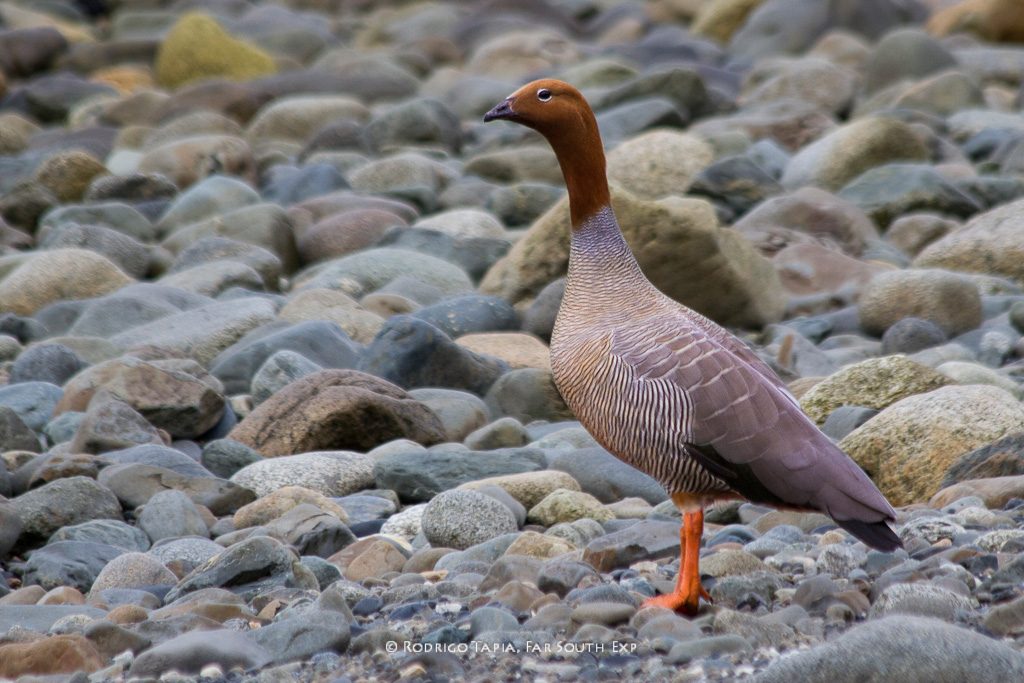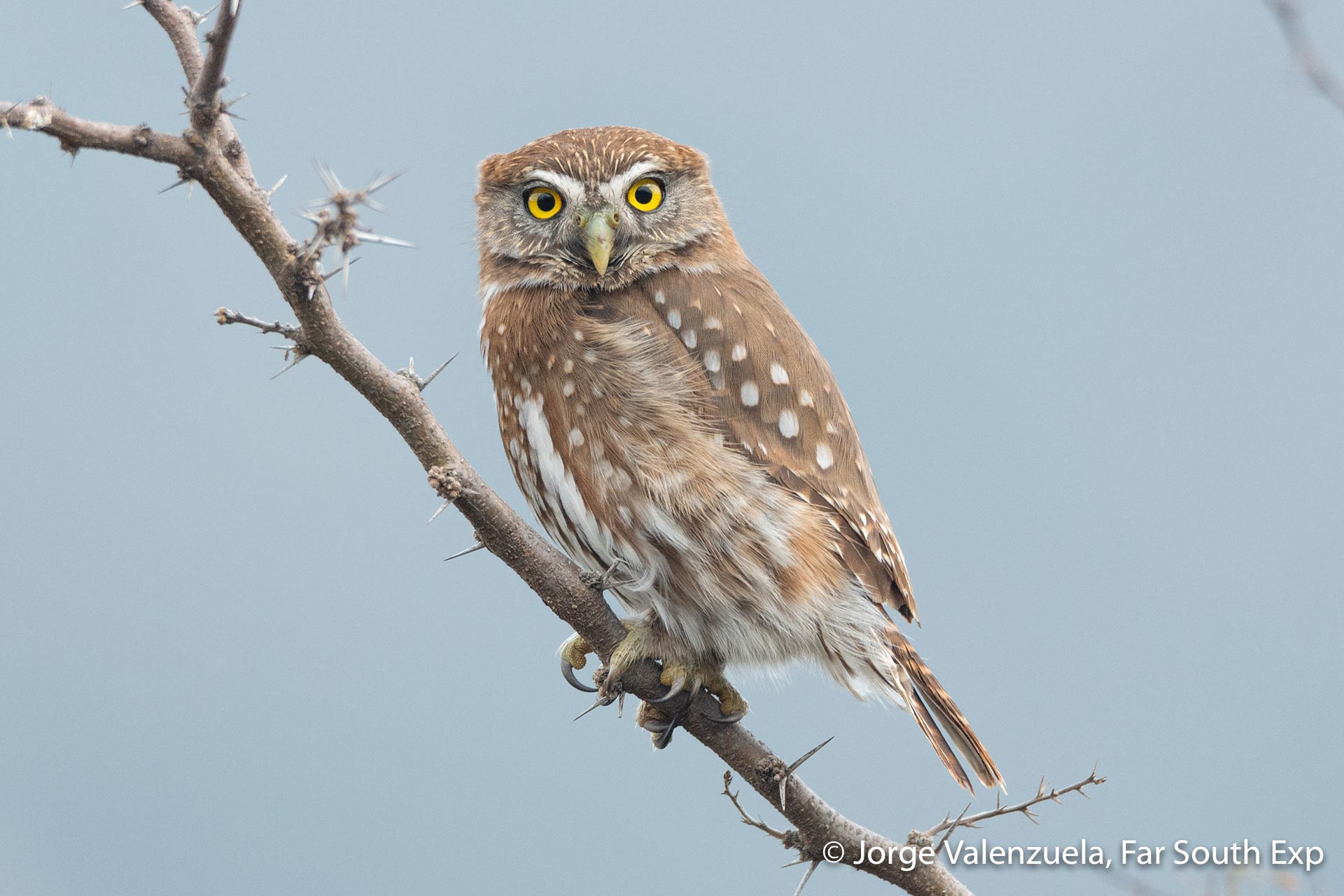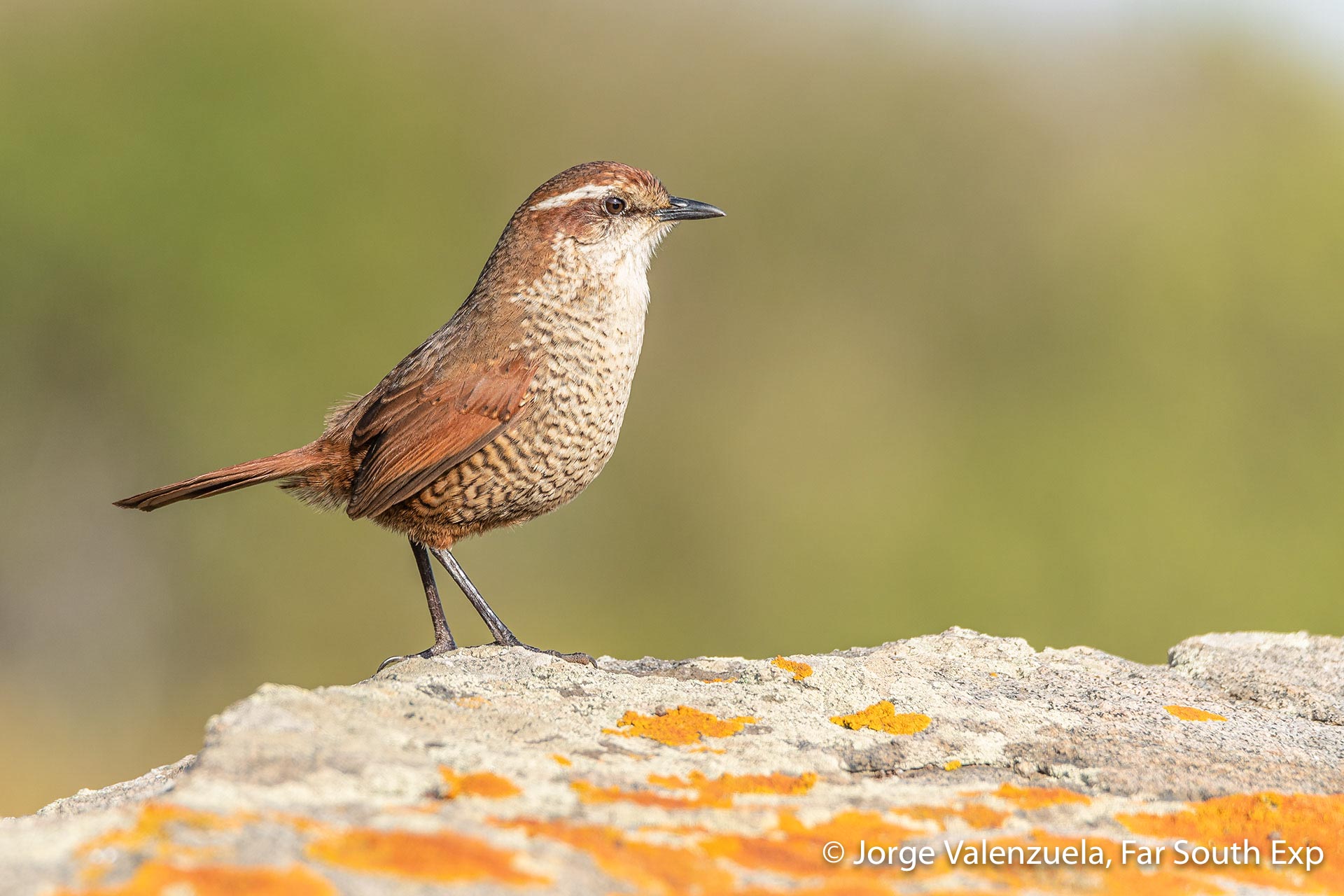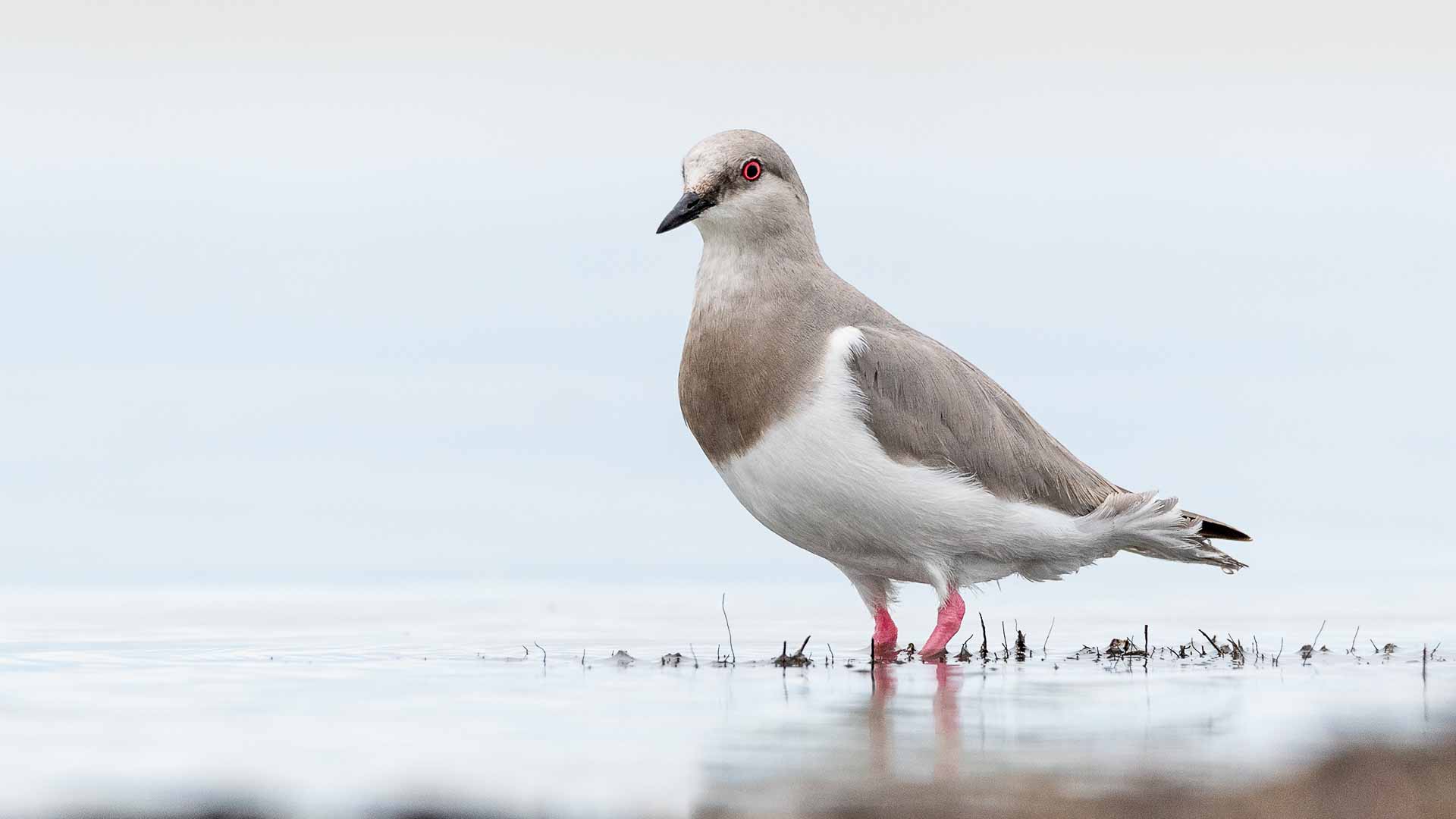Birding Chile tour | Birding Chile journey is a Quest for the endemics and specialties of the Heart of Chile. We will bird throughout the most scenic areas of the country, visiting a wide range of habitats, including mountain areas, rocky seashores, oceanic waters, scrubby slopes, broad-leaf woodlands, temperate and sub-Antarctic forests. Discover the birdlife of Chile in the hands of a Chilean-based company and the expertise and field skills of highly experienced local guides. Birding Chile tours.
Birding Chile |
Birding Chile tours | A Quest for Endemics and Specialties of Chile
Birding Chile Journey is an exciting birdwatching journey aimed to discover the endemics and specialties of this 3,000-mile long and narrow biogeographical island and explore and enjoy its marvelous landscapes, excellent infrastructure, great cuisine and fabulous wines.
Chile is a land of huge contrasts, truly a geographic extravaganza. On this birding adventure we will explore Chile’s incredibly diverse habitats and marvel at some of the most beautiful landscapes on Earth, while enjoying excellent hotels, local cuisine and wines. From Mediterranean scrub to lush rainforests and from coastal marshes to the impressive lakes and volcanoes of south-central Chile, our search for the avian specialties of this long and narrow country will take us from the high Andes to the cold and productive waters of the Humboldt Current in the Pacific. We will find many interesting species, some of them with very restricted distributional ranges and some endemic to the country. Birding Chile tours
Read our Birding Chile / Birdwatching Chile Blog here. Birding Chile tours
2025 Departures |
January 10 to 20
October 16 to 26
2026 Departures |
October 15 to 25
11-day trip from Santiago de Chile
5-day Northern Chile pre-extension
6-day Southern Patagonia post-extension
Click for space request |
Pincoya Storm-Petrel, off Reloncavi Sound © Claudio F. Vidal, Far South Expeditions
Itinerary in Brief |
Day 1 • Lampa and Batuco marshes – Farellones – San Jose de Maipo
Day 2 • El Yeso Valley
Day 3 • Drive to the Pacific coast – Maipo Estuary – Laguna El Peral Nature Reserve – Quintero (2 nights)
Day 4 • Pelagic trip off Quintero – Cachagua (Humboldt Penguin breeding colony)
Day 5 • La Campana National Park – Drive to Vilches (2 nights)
Day 6 • Altos de Lircay – Lake Colbun
Day 7 • Drive to Santiago – Flight to Temuco – O/N Temuco (2 nights)
Day 8 • Conguillio National Park – Llaima Volcano
Day 9 • Cerro Ñielol NR – Drive to Puerto Montt – Alerce Andino National Park – O/N Puerto Montt (2 nights)
Day 10 • Ferry ride to Chiloe Island – Pelagic trip off Chiloe
Day 11 • Pelagic trip off Reloncavi Sound – Flight to Santiago – End of main trip
Day 1 • Flight to Arica – Drive to Putre – O/N Putre (2 nights)
Day 2 • Parinacota – Lauca National
Day 3 • Drive to Arica – Azapa & Lluta valleys – O/N Arica (2 nights)
Day 4 • Pelagic trip off Arica – Chaca and Camarones valleys
Day 5 • Flight to Santiago
Day 1 • Flight to Punta Arenas – O/N Punta Arenas (1 night)
Day 2 • Ferry ride to Tierra del Fuego – Useless Bay for King Penguins – O/N Porvenir (1 night)
Day 3 • Laguna Verde – Ferry to mainland – Pali Aike road – O/N Puerto Natales (2 nights)
Day 4 • Torres del Paine National Park
Day 5 • Sierra Baguales – Drive to Punta Arenas – O/N Punta Arenas (1 night)
Day 6 • Flight to Santiago
Trip Highlights |
• Pelagic trips and ferry rides offering great opportunities for pelagic specialties of the eastern Pacific and Southern Ocean.
• The magnificent Andean Condor and Magellanic Woodpecker and stunning waders including Diademed Sandpiper-Plover, Magellanic Plover, Tawny-throated Dotterel, Rufous-chested Dotterel and Two-banded Plover.
• Up to nine endemic species including Slender-billed Parakeet, Crag Chilia, Moustached Turca and White-throated Tapaculo. We will also search for the quasi-endemic Chestnut-throated Huet-huet.
• A spectacular system of national parks and nature reserves protecting some of the most beautiful places on Earth. Birding Chile trip.
Trip Map |
Main Chile trip |
Easy to moderate walks | From sea level up to 3,000m. / 9842ft. | Three boat excursions + 2 ferry rides | Good photo opportunities
Our birding adventure in Chile starts today! Please make arrangements to arrive into Chile the prior day, in order to have an early start this morning. Your guide will be gathering trip participants at each individual hotel; right after we will drive a short distance north of Chile’s capital to explore some marshes around the localities of Lampa and Batuco. Wetlands are under a lot of urban pressure in central Chile and sadly Lampa and Batuco are examples of this threat. However, they hold a well represented sample of waterfowl, including Yellow-billed Pintail, Yellow-billed Teal, Cinnamon Teal, Chiloe Wigeon and Red Shoveler. Other targets here will be Cocoi Heron, Rosy-billed Pochard, White-cheeked Pintail and hopefully South American Painted Snipe. Correndera Pipit might be well singing high in the air in their characteristic courtship display! During the afternoon we will bird in the spectacular setting of Farellones. There are several Andean specialties here including Mountain Caracara, White-sided Hillstar, Rufous-banded and Creamy-rumped Miners, Cinereous, Black-fronted, White-browed and Rufous-naped Ground-tyrants plus Greater Yellow-Finch, Grey-hooded and Band-tailed Sierra-Finch. We will also look for the endemic Chilean Tinamou and Chilean Mockingbird and we might have the chance of seeing Red-backed (Variable) Hawk and Aplomado Falcon.
Overnight Santiago (Lunch, Dinner)(Guide).
We will have a full day to explore the surroundings of El Yeso reservoir in the Andean foothills, where will hopefully be rewarded with sightings of the endemic Crag Chilia plus our first Andean Condors, Black-chested Buzzard-Eagle, and several other Andean specialities such as Black-winged Ground Dove, Grey-flanked Cinclodes, Black-billed Shrike-Tyrant and Yellow-rumped Siskin. Careful scanning of grasslands and streams may produce the stunning Diademed Sandpiper-Plover, our main target species for the day. El Yeso valley is a lovely mountain spot where we will also have good chances for Mountain Parakeet flocks. During the afternoon we will visit another valley, Baños Morales. This location offers great chances for several other specialties including Mountain Caracara, White-sided Hillstar, Rufous-banded and Creamy-rumped Miners, Cinereous, Black-fronted, White-browed and Rufous-naped Ground Tyrants plus Greater Yellow Finch and Grey-hooded and Band-tailed Sierra Finches.
Overnight Santiago (Breakfast, Picnic lunch, Dinner)(Guide).
The Coastal Range separates Chile’s central valley from the Pacific coast and we will drive across to explore the productive Maipo river mouth and surrounding coastal wetlands, including El Peral Reserve. Our target birds here will be the cryptic-colored Stripe-backed Bittern, the brood-parasitic Black-headed Duck and the striking Many-colored Rush Tyrant; we will also have a chance to find the scarce and local Ticking Doradito.
Overnight Quintero (Breakfast, Lunch, Dinner)(Guide).
Today we will make an unforgettable visit to the cold and productive waters of the Humboldt Current, considered one of the world’s finest pelagic birding destinations. Here, we should see a great variety of tubenoses including up to six albatross species: Black-browed, Salvin’s, Buller’s, Chatham, Wandering (Antipodean) and both Northern and Southern Royal albatrosses. We also hope to find Southern and Northern Giant Petrels, Pintado, Masatierra, White-chinned and Westland Petrels, Pink-footed, Buller’s and Sooty Shearwaters, Wilson’s Storm Petrel, and Peruvian Diving Petrel. Other seabirds we may encounter include Red Phalarope, Sabine’s Gull and Chilean Skua. There are good chances of seeing cetaceans although they are always difficult to predict; on recent trips we have recorded Dusky Dolphin, Southern Right Whale Dolphin, and Orca! In the afternoon, we will head to the productive rocky coast north of Valparaiso. We have planned a visit to a protected breeding colony of the endangered Humboldt Penguin; the endemic Seaside Cinclodes and the delightful Marine Otter are both possible here as well. Before ending the day, will stop in a coastal marsh to see a variety of waterfowl including Red Shoveler, Yellow-billed Pintail, Speckled Teal and Chiloe Wigeon, all three lowland coot species (Red-gartered, White-winged and Red-fronted), Spot-flanked Gallinule and Plumbeous Rail, which is surprisingly quite easy to spot as it often walks in the open.
Overnight Quintero (Breakfast, Lunch, Dinner)(Guide).
During the morning we will bird at La Campana National Park, where we will be looking for an interesting array of passerines, all endemic to Chile: Dusky-tailed Canastero, Moustached Turca, Dusky Tapaculo and White-throated Tapaculo. We are also likely to encounter the remarkable Giant Hummingbird, Striped Woodpecker, Austral Pygmy Owl and Chilean Pigeon. The highest peak around, Mount La Campana (The Bell), dominates the entire scene; this area receives enough moisture from the ocean to sustain broad-leaf forests and a xeric shrub community named matorral (Chile’s equivalent to California’s chaparral). We will continue driving south along the central valley and the Panamerican Highway in direction to Talca (35°S). The forested rural locality of Vilches will be our base for two nights. Rufous-legged Owl usually roosts in the woodlands behind the lodge, a very good reason for a short owling night excursion.
Overnight Vilches (Breakfast, Lunch, Dinner)(Guide).
At dawn, we will visit the temperate southern beech forests of Altos de Lircay Nature Reserve to seek for several Patagonian woodland specialties. The Nothofagus forests are the home for an interesting array of species, including the rare Rufous-tailed and White-throated Hawks, Austral Parakeet, Thorn-tailed Rayadito and White-throated Treerunner. We will keep searching in the undergrowth bamboo thickets for the quasi-endemic Chestnut-throated Huet-huet and Magellanic Tapaculo, our main target birds here. Along the road we might see the largest of the tyrant flycatchers, the Great Shrike-Tyrant, which usually perches on wires looking for large insects and even small birds and rodents! We will head to the mountains once more to briefly visit Lake Colbún where our search will focus on the threatened local race of Burrowing Parakeet, which usually congregates in noisy flocks.
Overnight Vilches (Breakfast, Lunch, Dinner)(Guide).
After some dawn birding at Vilches we will drive back to Santiago and catch our flight to the city of Temuco, gateway of northern Patagonia. Overnight Temuco (B,L,D)(Guide).
During the morning we will visit the slopes of the Llaima Volcano located east of Temuco, in the gorgeous Conguillio National Park. This protected area offers spectacular vistas and remarkable vegetation, including stands of the peculiar Chilean Pine (also known as Araucaria or Monkey-puzzle tree). These woodlands are reminiscent to pre-historic landscapes and we will have good chances of seeing the endemic Slender-billed Parakeet and Magellanic Woodpecker together with a variety of Patagonian songbirds such as Des Murs’s Wiretail, Fire-eyed Diucon, Patagonian Tyrant, Austral Blackbird and Black-chinned Siskin. The soils of the forests and volcano slopes show an attractive array of wildflowers including several species of ground orchids, anemones, geraniums and lady slippers.
Overnight Temuco (B,L,D)(Guide).
We will visit Cerro Ñielol, a very interesting and well preserved urban nature forest where we will try to find the rare Rufous-tailed Hawk, Black-throated Huet-huet and Des Murs’s Wiretail.
We will drive towards Puerto Montt (41°S) and as we head south in clear skies we will admire a line of volcanos which form part of the section of the Andes; the most striking is no doubt Volcano ‘Osorno‘ and its almost perfect cone-shaped profile. The city of Puerto Montt is located at the very end of Chile’s central valley. The topography south of here starts to break out, forming the maze of archipelagos and channels known as the Patagonian Fjords. The grasslands, orchards and agricultural fields are ideal habitat for Black-faced Ibis, Chimango Caracara, Southern Lapwing, Chilean Flicker, Rufous-tailed Plantcutter, Common Diuca Finch and Grassland Yellow Finch. Today we explore the lush temperate rainforest of Alerce Andino National Park, located just one hour south of Puerto Montt. Here we will search for other Patagonian rainforest specialties including Chilean Hawk, Green-backed Firecrown, the skulking Black-throated Huet-huet, Ochre-flanked Tapaculo and White-crested Elaenia. Later, on route back to Puerto Montt, we will scan the intertidal mudflats in search of wintering flocks of Nearctic visitors such as Hudsonian Godwit, Red Knot and Sanderling; other common coastal birds include the stocky Flightless Steamer Duck, Black-necked Swan, American Oystercatcher, Brown-hooded Gull and the local Snowy-crowned (Trudeau’s) Tern.
Overnight Puerto Montt (B,L,D)(Guide).
We drive south to the ferry across the Chacao Channel. This short 30-minute journey offers great marine wildlife viewing opportunities and we are likely to see pods of Peale’s Dolphin, groups of South American Sea Lion and a great array of seabirds including Southern Giant Petrel, Sooty and Pink-footed shearwaters, Imperial and Red-legged cormorants, Peruvian Pelican and South American Tern. Once in the island we’ll take a scenic drive to the little fishermen’s cove of Puñihuil. Here we will circumnavigate the islets to see one of the few mixed breeding colonies of Humboldt and Magellanic penguins. Marine Otter, Magellanic Cormorant, Kelp Goose and Flightless Steamer Duck are all usually found here, too. If you are interested to spend more time at sea to have more opportunities for wildlife, we can arrange for a highly recommendable 3-4 hour boat trip to Metalqui Island. Pygmy Blue Whales, one of the races of the world’s largest living animal, are often seen from December until March; we also have other great pelagic prospects such as the poorly-known Subantarctic Shearwater, which probably nests in this rugged, densely forested coastline.
Overnight Puerto Montt (B,L,D)(Guide)
Early morning with the first light of the day, we will take a boat trip into the Reloncavi Sound to look for seabirds, particularly the recently discovered Pincoya Storm Petrel, a new species to science, overlooked during many years because of its strong similarities to sympatric Wilson’s Storm Petrels. The range of this species seems to be very local and restricted to the nearby waters south of Puerto Montt and between Chiloé Island and the Continent. (B,L)(Guide). Birding Chile tours.
Dates & Rates |
Group trip (up to 8 guests), fully guided by a Tour Leader from our company. Birding Chile tours.
Trip Length | 11 days, 10 nights |
|
Dates | 2025 | January 10 to 20 |
October 16 to 26 |
||
2026 | October 15 to 25 |
|
Price per person | $5,998 |
|
Single Supplement | $600 |
|
|
||
The above price is per person in USD, based on double occupancy. All payments are in US Dollars.
Single supplement will be added if single accommodations are requested.
The trip price includes: All accommodations, meals and guide services as stated in the itinerary, private ground transportation during the tour, pelagic trip off Valparaiso (c. 6 hours), two ferry rides, and park entrance fees. A daily bottle of mineral water is also included.
The trip price excludes: Domestic flights (add app. $300 for 3 in-country flight package), tipping for restaurants and guides, travel insurance, entrance tax to Chile, excess baggage charges, private excursions, à la carte dishes, snacks, drinks, laundry, telephone calls and anything else of a purely personal nature. Birding Chile tours.
Optional Extensions |
Northern Chile Pre-Extension (5 days)
Easy to moderate walks | From sea level up to 4.500m. / 14.763ft. | One boat excursion | Good photo opportunities
Birding Chile tours. Our Chile birding adventure begins today! You will be met by your tour leader at Santiago airport for a morning flight (c. 2.5 hours) to Arica, at 18°S, Chile’s northernmost city. Right after, we will leave the coast and head towards the imposing slopes of the Andes, but first we will search around the lowland cultivated valleys for the intriguing Peruvian Thick-knee; Andean Swifts and Grayish Miners are possible species just before we reach the hyper-arid desert stretch, as we drive up to the highlands and into our destination, the mountain village of Putre. This picturesque Andean settlement is located at 3,400 meters above sea level (11,483 ft.) and will be our base for the following two nights. The pre-puna semi-arid bushy slopes are very rich in species; Sparkling Violetear and Andean Hillstar, Creamy-breasted and Canyon Canasteros, Golden-billed Saltator and Blue-and-yellow Tanager, Hooded and Thick-billed Siskins are among the range of exciting birds that occur here. The gardens, cultivated terraces, eucalyptus groves and rocky walls surrounding Putre are the perfect habitat for Aplomado Falcon, Mountain Parakeet, Bare-faced Ground Dove, Spot-winged Pigeon, White-throated, Plain-breasted and Straight-billed Earthcreepers, White-winged Cinclodes, Black-throated Flowerpiercer, Chiguanco Thrush, White-browed Chat-Tyrant, Band-tailed Seedeater and Black-hooded, Mourning and Ash-breasted Sierra Finches. Overnight Putre (Lunch, Dinner)(Guide)
The Altiplano, Puna or High Andean Plateau above 4,000m, is truly a mecca for wildlife and we will have the whole day to discover its many secrets and stunning landscapes. Established to protect the highest lake in the world (and World Biosphere Reserve), Lauca National Park supports a great diversity of Andean fauna. The high-altitude bogs, locally known as bofedales, hold a remarkable number of species (all endemic to this eco-region), specialties such as all three Chilean species of Flamingo (Chilean, Andean and Puna), the delicate Andean Avocet, Giant and Andean coots, Puna Ibis, Andean Goose, Puna Teal, Rufous-bellied and Grey-breasted Seedsnipes, Andean Avocet, Andean Lapwing, Puna Plover, and the exquisite Diademed Sandpiper-Plover. The surrounding barren plains are a very good habitat for both Puna Rhea and Puna Tinamou. An impressive cast indeed. At 4,500m / 14,763ft, Lake Chungara area will be the highest spot during our entire trip. Surrounded by imposing volcanoes, this is a magnificent place and probably one of the most beautiful views that we will have during our whole Chilean Birding Adventure. Among the species we can find here are Andean Gull, Andean Flicker, Cordilleran Canastero, Puna and White-fronted Ground Tyrants, Andean Negrito, White-winged Diuca Finch and Black Siskin. Overnight in Putre (Breakfast, Lunch, Dinner)(Guide)
In the morning we drive back to Arica. Today we will investigate the bird-rich valleys of Azapa and Chaca, the haunt of specialties such as Croaking Ground Dove, Chilean Woodstar, Peruvian Sheartail, Oasis Hummingbird, Tamarugo and Cinereous Conebills, Bran-colored and Vermillion Flycatchers, Peruvian Meadowlark and the odd-looking Slender-billed Finch. In the afternoon we will comb the productive estuary of the Lluta River in order to study the various coots, egrets, shorebirds, terns and gulls gathered here to roost, usually in large numbers. Overnight Arica (Breakfast, Lunch, Dinner)(Guide)
Early morning we will take a boat trip off Arica to continue our search for the endemic seabirds of the Humboldt Current. We will look for Peruvian Diving Petrel and we may also find Elliot’s and Markham’s Storm Petrels. The delightful Inca Tern will be a common sight around the harbor plus Common and South American Terns. The endangered and local Peruvian Tern is another potential species for the morning. Along the rocky coast south of Arica we expect to see a great array of seabirds including Peruvian Pelican, Peruvian Booby, Guanay and Red-legged Cormorants, the stunning Inca Tern plus Belcher’s and Grey Gulls. Other birds include Little Blue Heron, Willet, Whimbrel, Ruddy Turnstone, Surfbird, Franklin’s Gull and Elegant Tern. We will extend our journey southwards along the coast to the Camarones Gorge where we expect to see Pied-crested Tit-Tyrant and Yellowish Pipit. Overnight Arica (Breakfast, Lunch, Dinner)(Guide)
We will catch a morning flight to Santiago to continue with our exploration of central Chile and its endemic and specialties. (B)(Guide) Birding Chile tours.
Southern Patagonia Post-Extension (6 days)
Easy to moderate walks | From sea level up to 1,000m. / 3,280ft. | 4 ferry rides | Excellent photo opportunities
Birding Chile tours. We will catch an evening fight to Punta Arenas (53°S), Chile’s southernmost city. This can be a truly enjoyable plane journey, as we’ll fly over seemingly endless Patagonian icecaps, deep fjords and the rugged peaks of the southern Andes. After our arrival, we will bird along the coast of the mythic Straits of Magellan looking for Flying Steamer and Crested Ducks, Kelp Goose, King and Rock Cormorant and Magellanic Oystercatcher. The coastal grasslands can produce other interesting sheldgeese including the ubiquitous Upland Goose, the smaller Ashy-headed Goose and the endangered Ruddy-headed Goose. Overnight Punta Arenas (Dinner)(Guide).
This morning, we will take a 2-hour ferry ride across the Straits of Magellan towards the town of Porvenir, in Tierra del Fuego. We will be entertained by an interesting array of tubenoses such as Black-browed Albatross, Southern Giant Petrel, Southern Fulmar, the delightful Cape (or ‘Pintado’) Petrel, White-chinned Petrel, Sooty Shearwater, Wilson’s Storm Petrel and Magellanic Diving Petrel. We will see other seabirds including Magellanic Penguin, Chilean Skua, Kelp and Dolphin Gulls and South American Tern. Possible marine mammals will include the common South American Sea Lion and playful pods of Peale’s Dolphin. Once we land in Tierra del Fuego, we will check the coast where we shall see Crested Duck, Chiloe Wigeon, Baird’s and White-rumped Sandpipers, Magellanic Oystercatcher and Dark-bellied Cinclodes, among several other ‘goodies’.We will continue east to explore the large embayment of Useless Bay (Bahía Inútil), where it is likely to find a wealth of seabirds and other aquatic birds. On route we will be checking for potential raptors including Variable Hawk, Aplomado and Peregrine Falcons. Magellanic Horned Owl nests in some ravines we will pass by. The main target of our visit to this scenic part of the island is the newly established King Penguin breeding colony. This splendid species congregates year-round on this site and they have successfully started to breed and raise young here. Later, and before heading back to Porvenir, we will drive through the shrubby slopes and moorlands of the Baquedano Hills searching for Rufous-chested Dotterel, Austral Canastero and the stunning White-bridled Finch. Overnight Porvenir (Breakfast, Lunch, Dinner)(Guide).
During the morning we will visit some alkaline lagoons east of the village. Our target here will be the local and odd-looking Magellanic Plover. This enigmatic wader looks more similar to a little dove rather than to any shorebird, and is often seen feeding ‘scratching’ the mud with its bright pink legs! Other birds of the area will include Two-banded Plover, Wilson’s Phalarope, the abundant White-rumped Sandpiper, Short-billed Miner and the ubiquitous Austral Negrito. The windswept steppes of Tierra del Fuego and Patagonia hold a number of specialties including Least Seedsnipe, Tawny-throated Dotterel, Short-billed Miner, Band-tailed Earthcreeper and Chocolate-vented Tyrant. A short ferry ride will allow us to be on mainland once again and if we are lucky, to see the striking Commerson’s Dolphin following the wake. Chilean Flamingo, Coscoroba Swan, Silver Teal plus thousands of waders such as Wilson’s Phalarope, Baird’s and White-rumped Sandpipers will be common at the roadside wetlands while we explore and enjoy the beauty of this ‘big sky’ country. On the journey, we should encounter Lesser Rhea, Cinereous Harrier, Cinnamon-bellied Ground-Tyrant and Patagonian Mockingbird. Large herds of camel-like Guanacos will be a common sight along the entire drive towards Puerto Natales and other possible mammals will include Southern Grey (Chilla) Fox, Patagonian Hairy Armadillo and Patagonian Hog-nosed Skunk. Overnight Puerto Natales (Breakfast, Lunch, Dinner) (Guide).
Torres del Paine is one of the gems of Chile and certainly one the most visited parks in Patagonia. We will have the whole day to explore its diverse habitats, but above all, to appreciate the colossal magnitude and rugged beauty of the awe-inspiring granite peaks which name the park.The reed-fringed lagoons of the eastern side of the park will keep us busy during the whole morning. Here we will find a wealth of waterbirds including Great, Silvery and White-tufted Grebes, Ruddy (Andean) and Spectacled Ducks, Speckled Teal, Yellow-billed Pintail, and with luck, the elusive and recently re-discovered Austral Rail. We also hope to see Andean Condors and Black-chested Buzzard-Eagle hovering in these turbulent skies. During the afternoon we will visit Lake Grey to enjoy the stunning sight of its southern shore dominated by stranded blue icebergs. We will scan the fast-flowing rivers hoping to find the remarkable and colourful Torrent Duck. Overnight Puerto Natales (Breakfast, Lunch, Dinner) (Guide).
Early in the morning we will explore the impressive Sierra Baguales Range, located northeast of Torres del Paine. Along the road and in the scrubby gullies, we will look for more restricted-range songbirds in Chile such as Patagonian Mockingbird and Grey-bellied Shrike-Tyrant. As we continue exploring this montane habitat we might find the local White-throated Caracara, Grey-breasted Seedsnipe, Rufous-banded Miner, Cinnamon-bellied and Ochre-naped Ground Tyrants, Patagonian and Greater Yellow Finches and the stunning Yellow-bridled Finch. Overnight Punta Arenas (Breakfast, Lunch, Dinner) (Guide).
Transfer to Punta Arenas airport for our connecting flight to Santiago. End of the trip. (Breakfast). Birding Chile tours.
Tour Leaders |
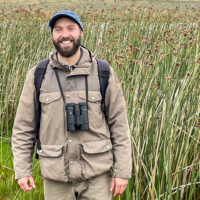
Jürgen is a seasoned Patagonian naturalist guide with over 15 years of experience, guiding groups from different countries since he was 18. He was born in Punta Arenas, and since his childhood, he has lived in the countryside, growing up deeply interested in the wildlife of his beloved home region. As a young kid, he went trekking with his parents, both former guides, to different trails in Patagonia, especially to Torres del Paine National Park, where he first learned to recognize flora & fauna and became passionate about bird watching. At only 7 years old, he hiked to the base of Las Torres. Later, he traveled around Chile and South America, deeply interested in the relationship between geography and biodiversity, where he became aware of the different endemic families of flora & fauna present along the large biological corridor of the Andes Mountains. He graduated in architecture from the University of Chile and is currently focused on roof design ecological and public spaces using endemic flora to improve urban landscapes.
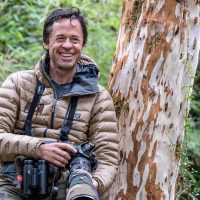
A viticulturist by profession, Jorge was attracted to birds at an early age while frequenting the countryside of central Chile during holidays, a fact that made him pick a career related to the outdoors such as agriculture, which enabled him to have an even deeper contact with nature. Born in Viña del Mar, he has lived in Santiago and other places in central Chile (O’Higgins and Maule areas), where the best red and white wines of Chile are produced. From watching birds in the wild, by 1993 he was motivated enough to become a member of UNORCH, the Chilean Ornithologists Association, a step that further helped him into deepening his knowledge on the birds of Chile, and from birdwatching he gradually moved into self-taught outdoors photography, a craft he learned through many hours in the field, reading and seeking advice from experts.
Some four years ago he started devoting more and more hours out in the field to learn bird and wildlife photography first-hand, especially in the central Chilean Andes mountains. Today the images he has captured during his travels across Chile stand out as testimonials of his journeys, which started as a schoolboy in 1992, and continue to this day, leading him to explore new places such as southern Chile and Chilean Patagonia. As part of the Far South Expeditions team, he guides some of our birding and photo tours in Chile & Patagonia and curates the photo galleries in our website. Also contributes to our wildlife blog with his photography and articles. In his spare time Jorge enjoys mountaineering, cycling and fly-fishing, all outdoors and nature-related sports.
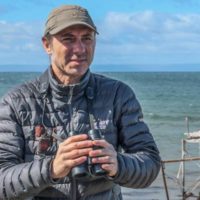
Rodrigo Tapia started his long-time love relationship with birds when he became an avid birder by the age of 10, and has been observing, studying and learning about them for more than 30 years now, first by birding in many different environments from the seaside to the Andes mountains around his home patch, acquiring in the process a good deal of field experience with virtually all the birds of central Chile including most chilean endemics, and later expanding his voyages to the rest of the country. This early passion naturally evolved into his career and led him into studying Biology at Universidad Católica de Valparaíso and further studying with Cornell Lab of Ornithology. He has explored Chile’s whole length from the northern Altiplano to Cape Horn while conducting ornithological research and guiding groups of birders since 1989. He studied the birds in the wetlands of the Aconcagua river and Mantagua for three years, gathering experience with shorebirds, plovers, waders and coastal seabirds. Rodrigo travelled to Antarctica for the first time in 1991 as part of a research team conducting studies on antarctic penguins, and later worked for eight seasons in the White Continent as an expedition leader, lecturer and zodiac driver on board a couple of vessels. These years of sailing across the Drake Passage, together with the experience gathered in pelagic birding off his hometown of Valparaíso in the Pacific coast of central Chile gave him hundreds of hours with albatrosses, petrels and other seabirds, a group of birds which has always captivated him.
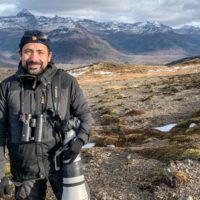
Claudio has been exploring and birding since the age of 12 and currently leads birding / nature tours and photo safaris throughout Patagonia, Chile and South America. He is one of the two founders and original driving forces behind the far South Expeditions concept and company. Claudio has a particular interest in the seabirds and marine mammals occurring in the Humboldt Current, Patagonia and Antarctica. Botany is also one of his greatest passions, leading him to devote to the photographic documentation of wildflowers of desert and Mediterranean regions of the world, of which he possesses a vast archive. Claudio is now finishing the writing of a Field Guide to the Birds of Chile together with a team of accomplished field ornithologists, and is co-author of more than 20 books, including the acclaimed Birds of Patagonia, Tierra del Fuego and Antarctic Peninsula. He is actively involved in several ecotourism projects in Chile and is founding partner of Far South Expeditions since 1997. He lives in Punta Arenas.
Tour Registration |
To book this tour, please fill in our online registration form. We will process your booking and will send you a note with space confirmation and a transfer invoice with payment instructions within 24 hours. The transfer amount is 500 USD per person. Full payment of the tour fee is due 90 days prior to tour departure.
Note: Inquiries received on Saturdays, Sundays and Holidays will be replied to during the following working day.
Cancellation Policy
Notice of cancellation can only be accepted in writing from the person who signed the booking form and takes effect on the day such noticed is received by us.
Refunds are made according to the following schedule:
• If cancellation is made 120 days or more before departure date, the transfer amount minus 200 USD is refundable.
• If cancellation is made between 120 and 60 days before departure, the transfer is not refundable, but any payments covering the balance of the fee will be refunded.
• If cancellation is made less than 60 days before departure date, no refund is available.
This policy and fee schedule also applies to pre-trip and post trip extensions, as well as any transfers from one tour to another. We strongly recommend the purchase of trip cancellation insurance to protect yourself. Birding Chile tour.

